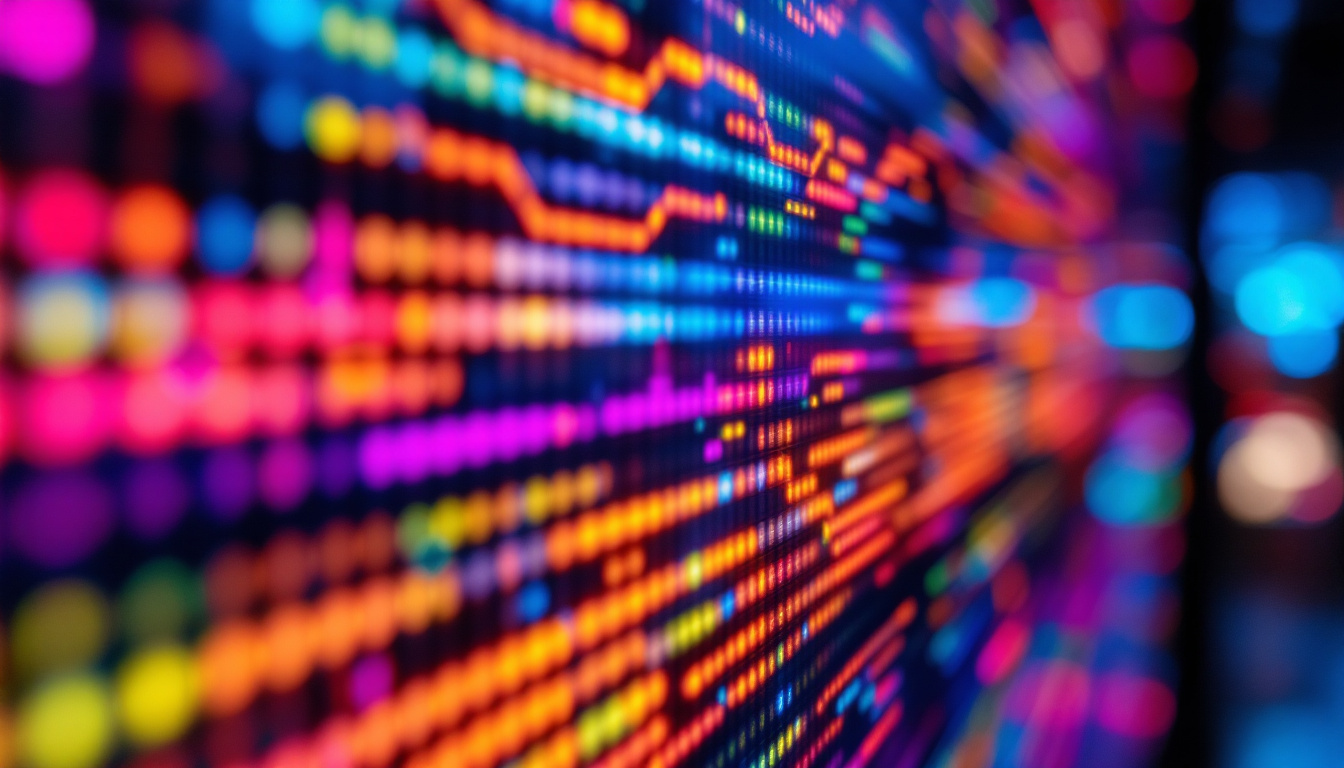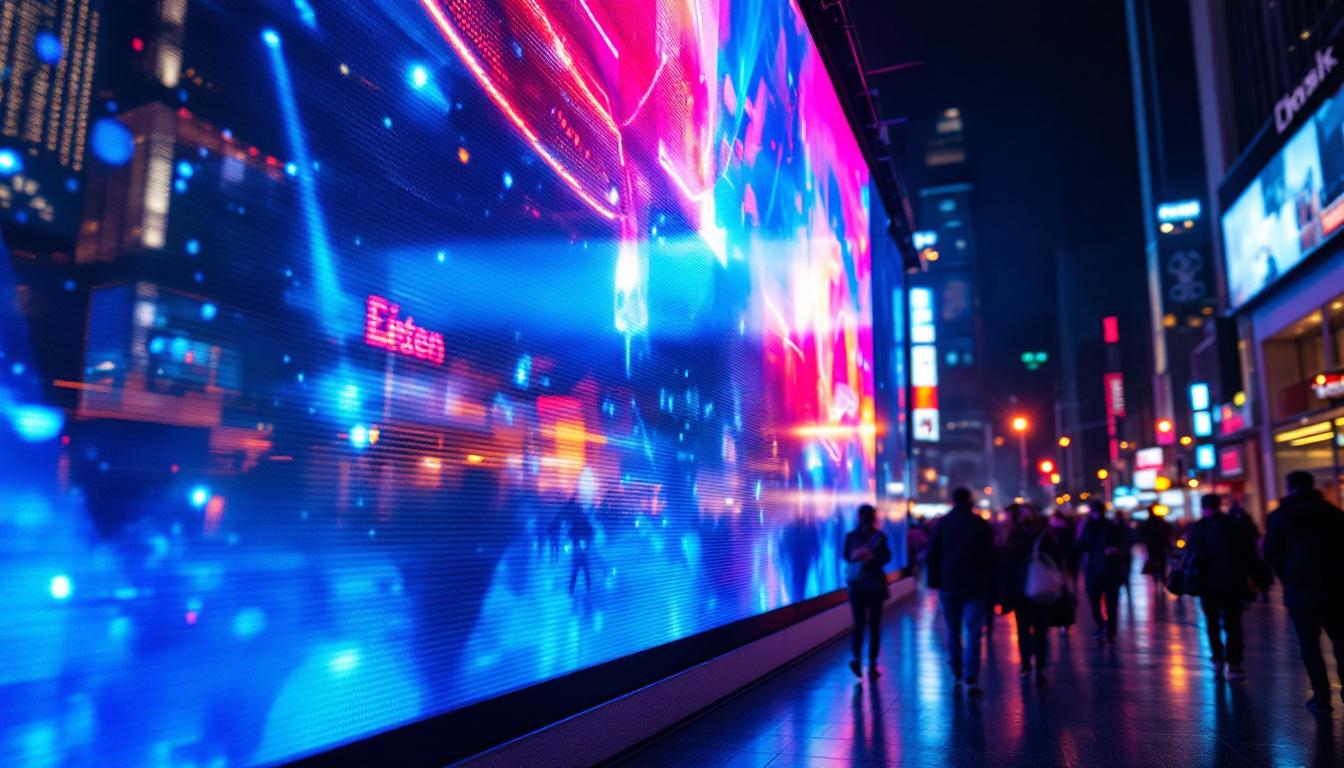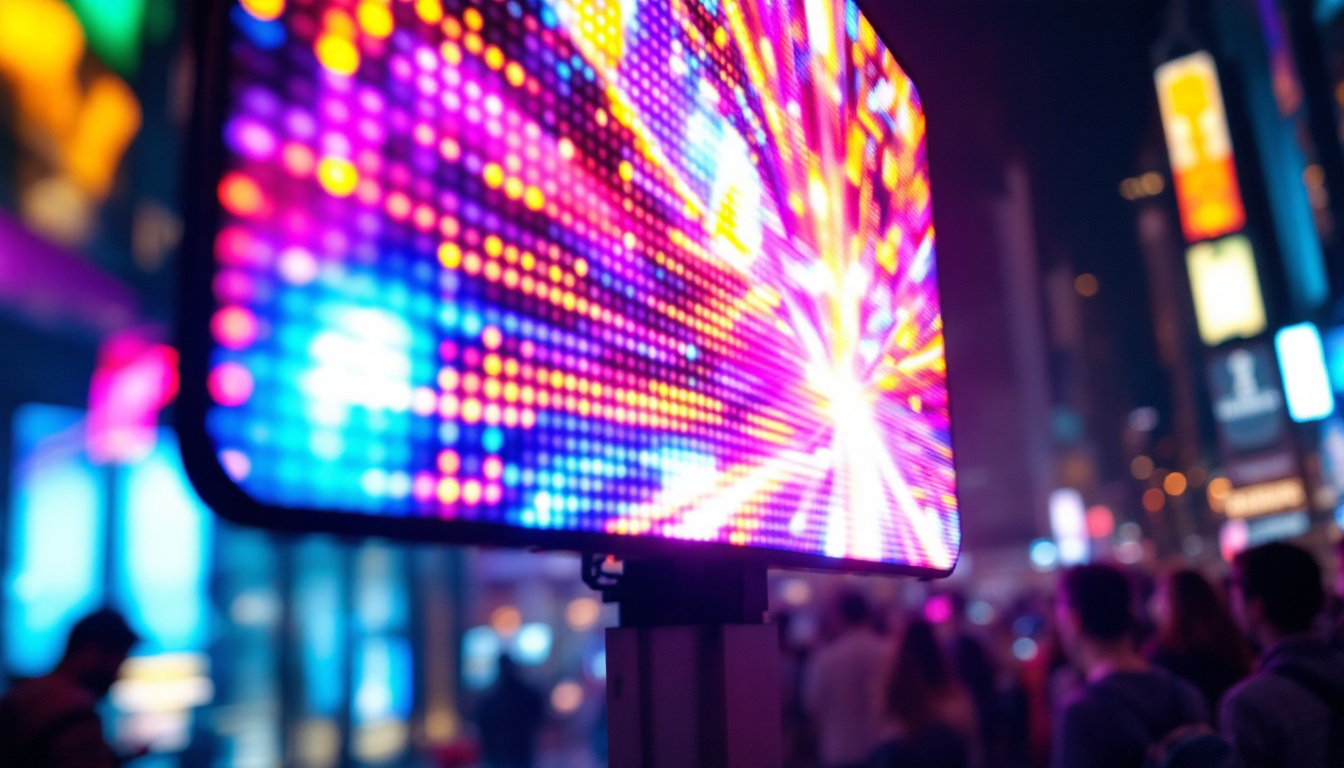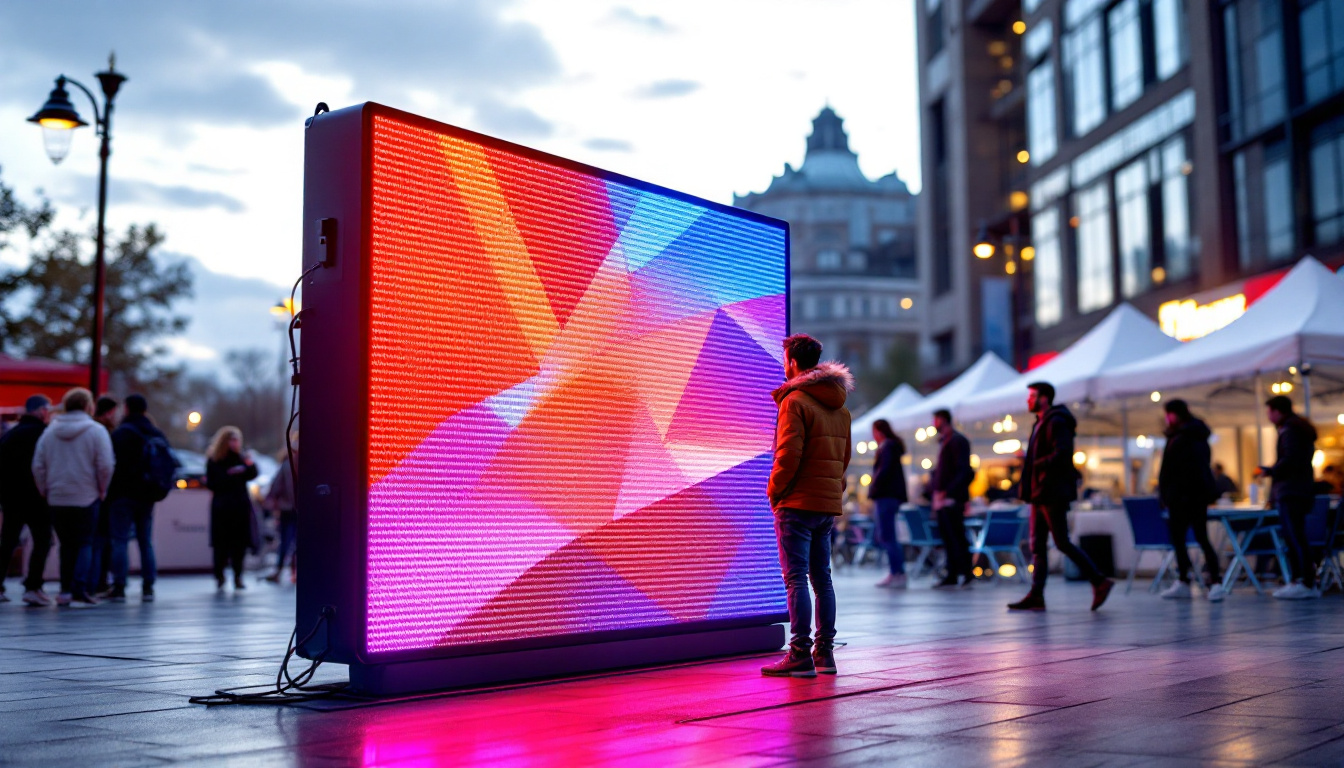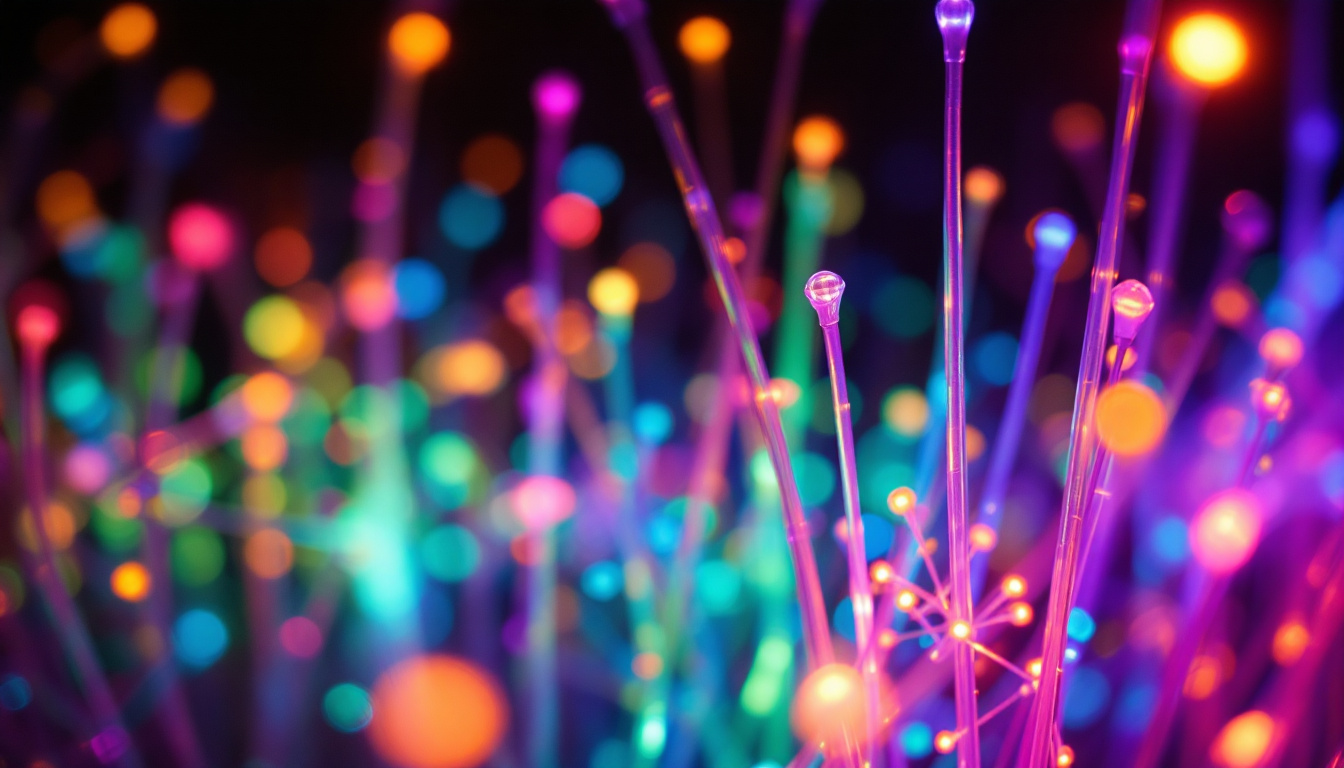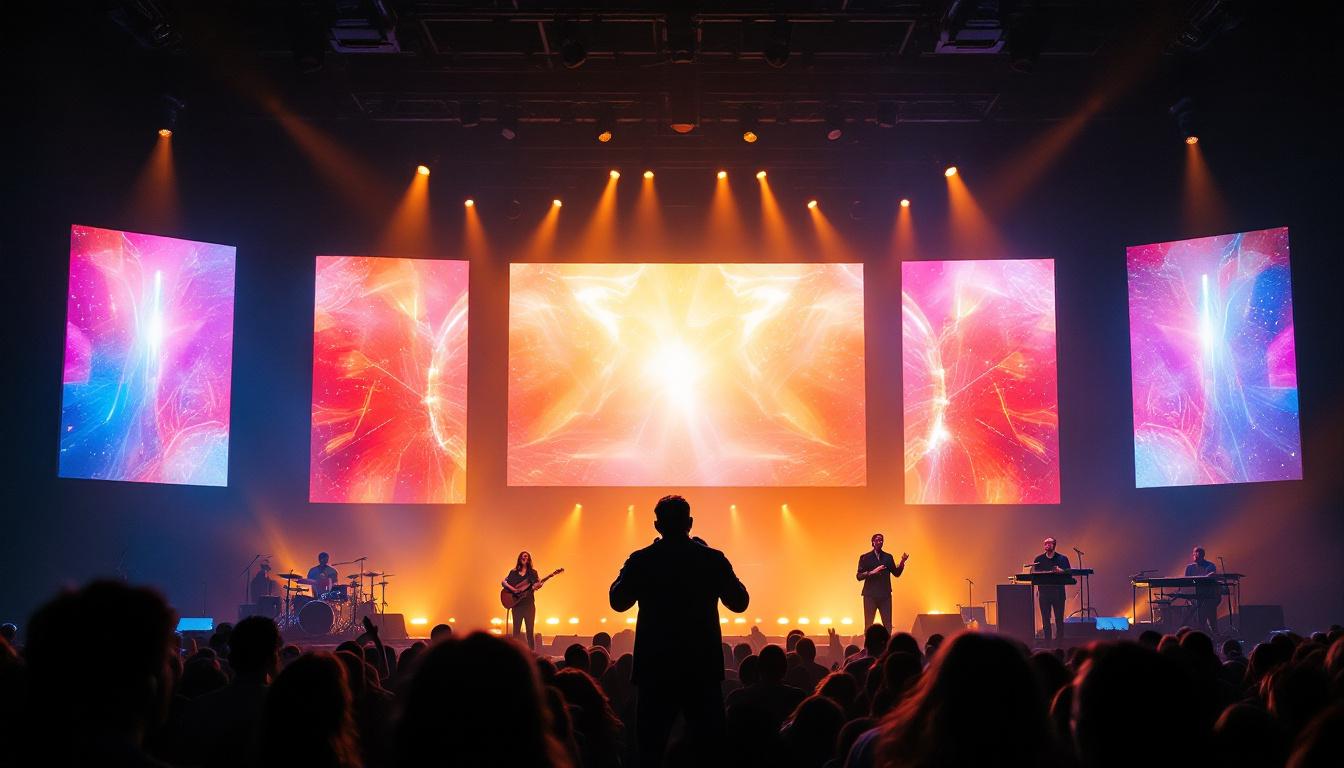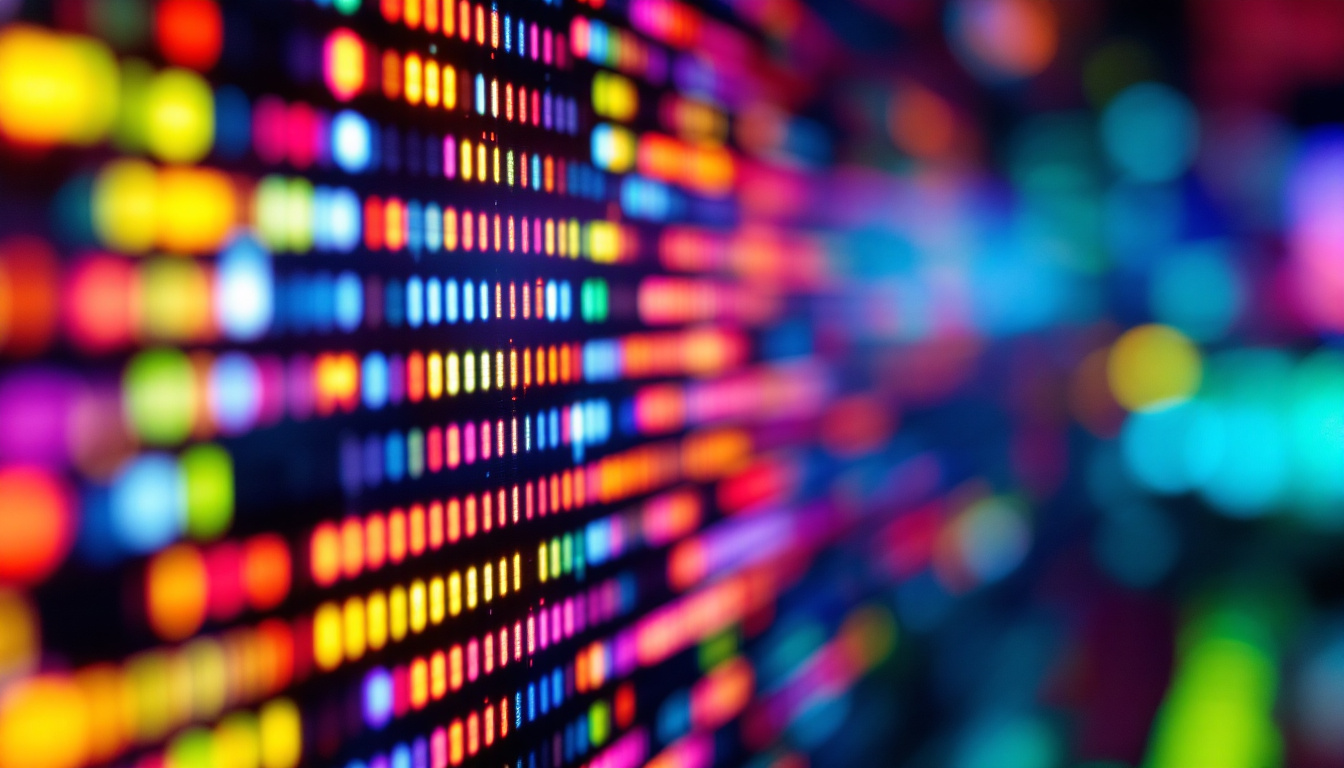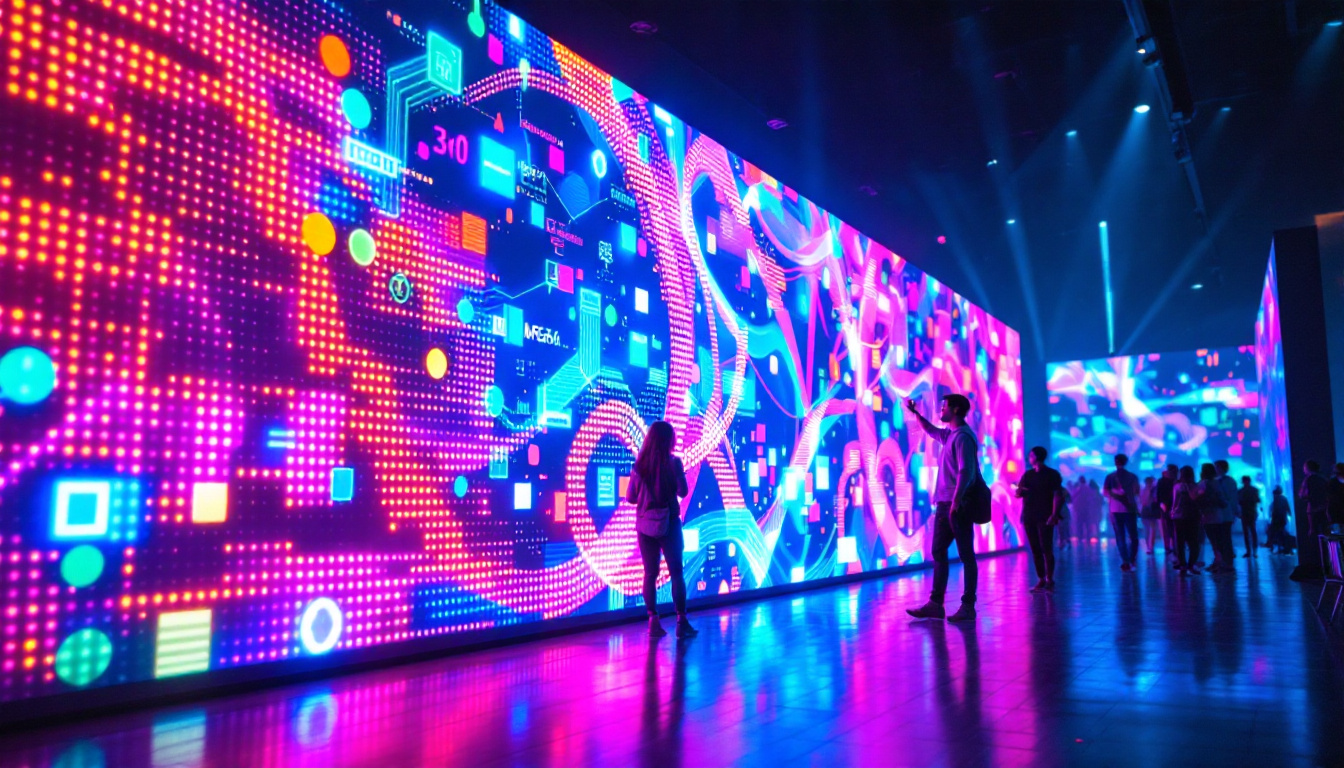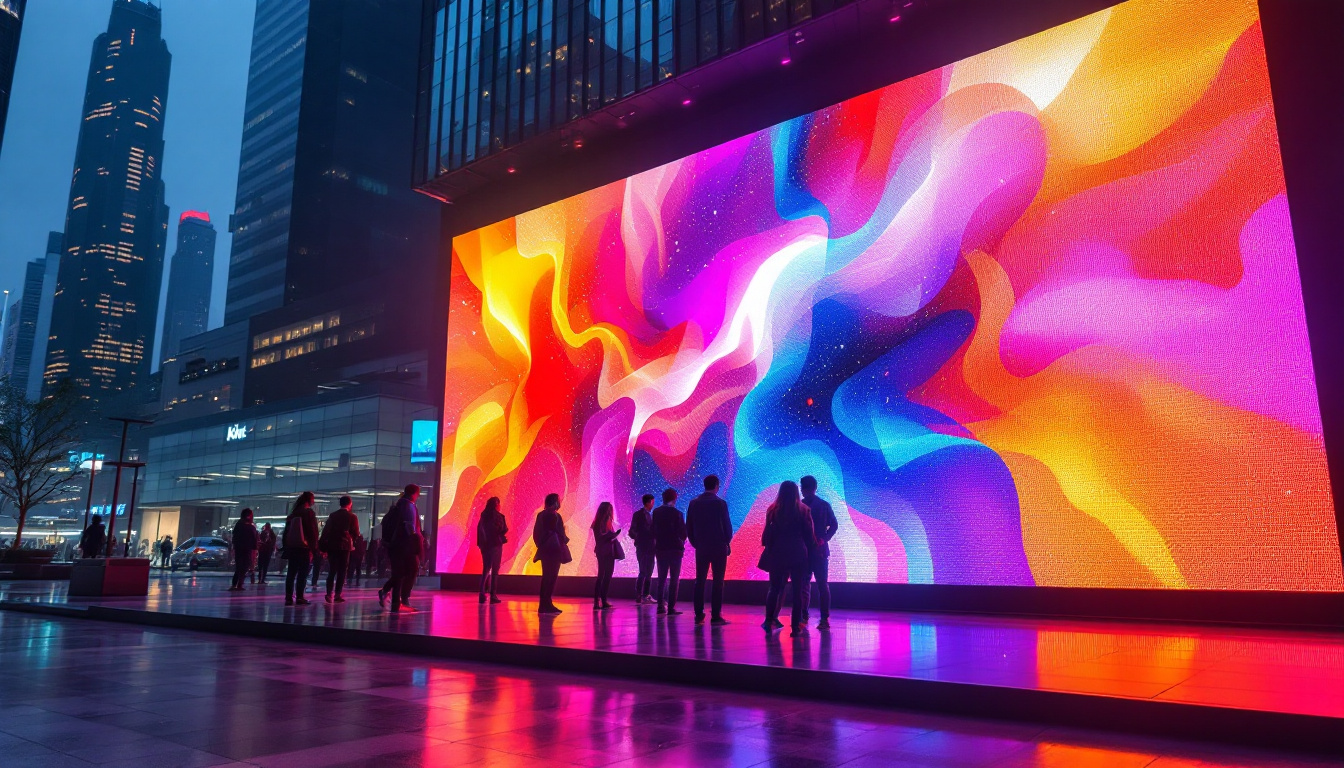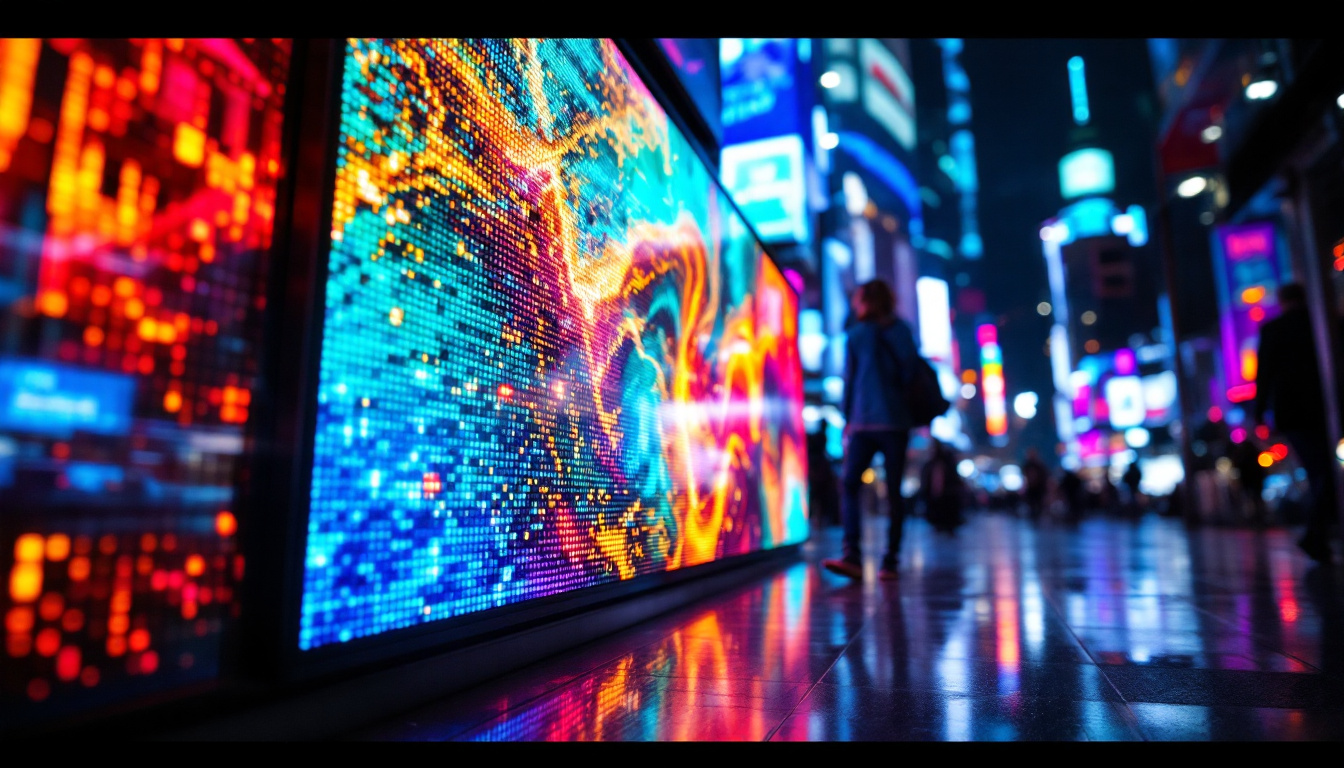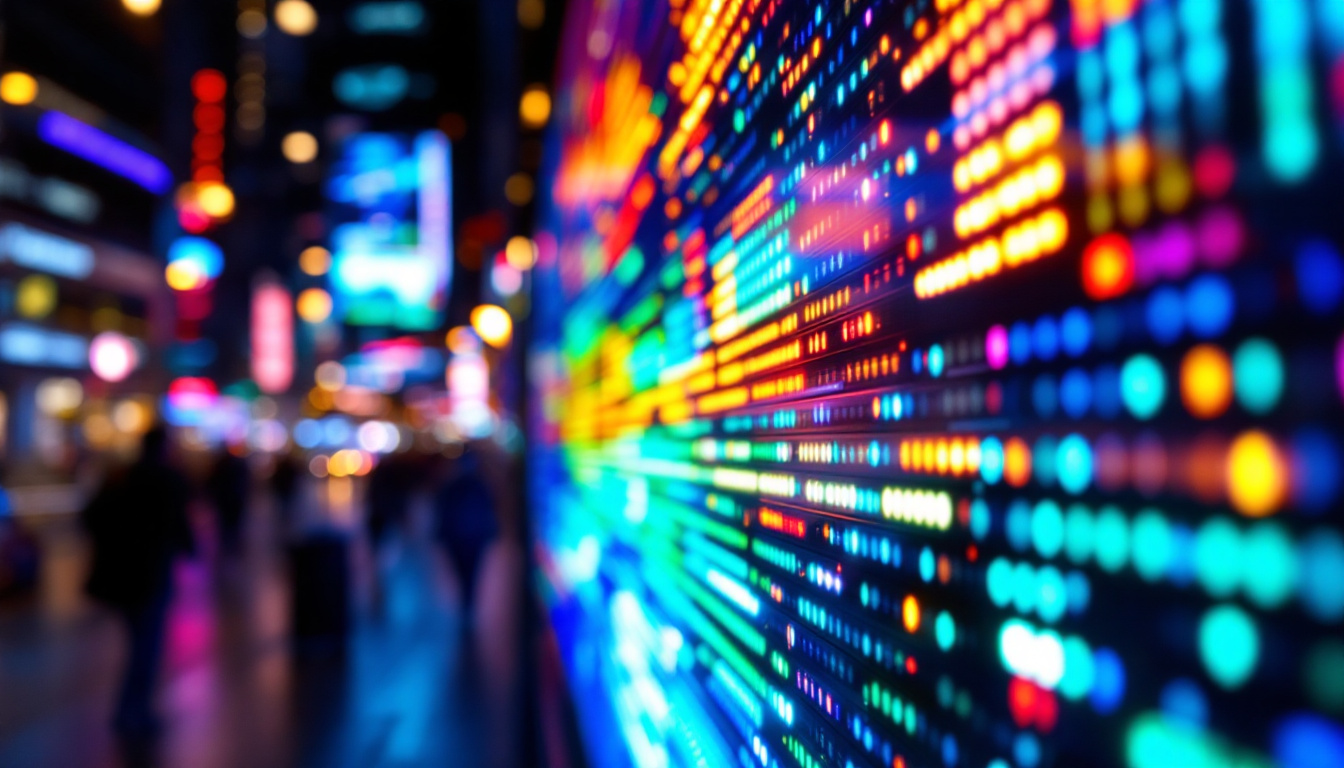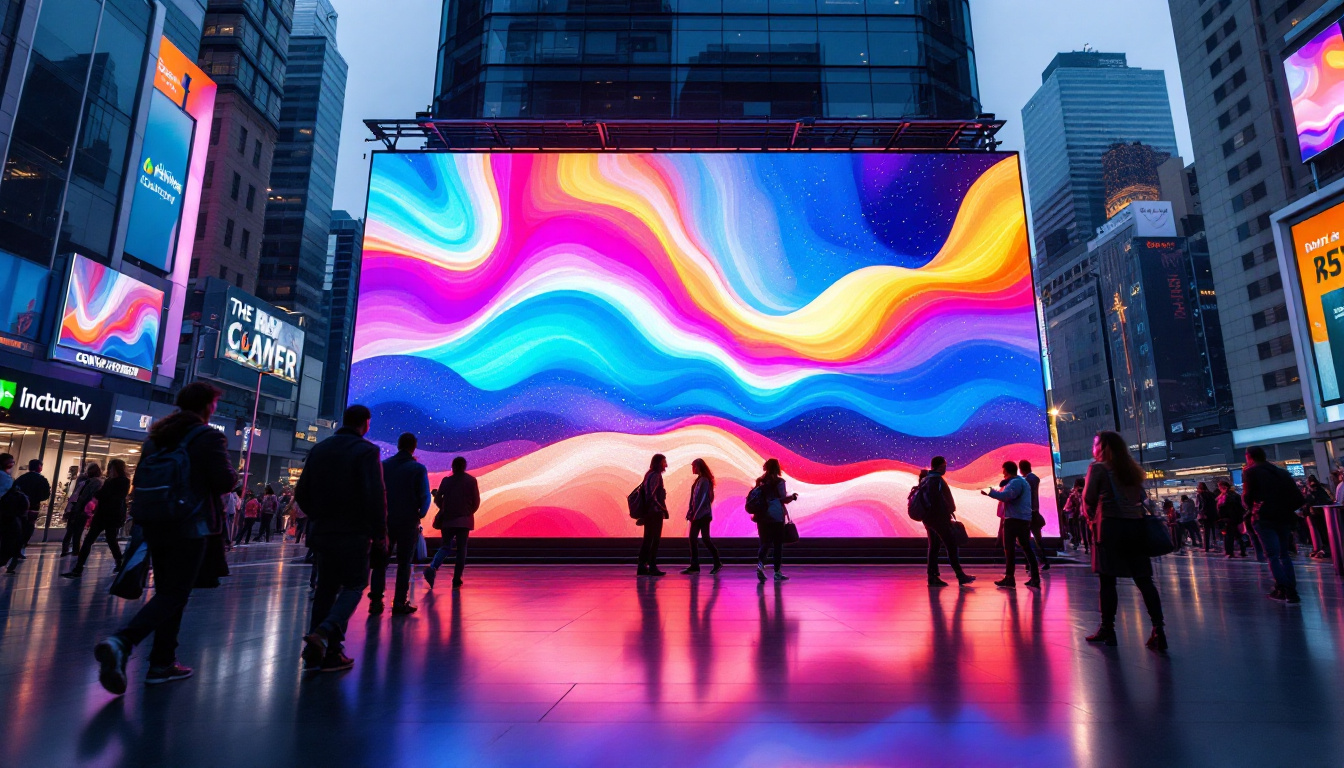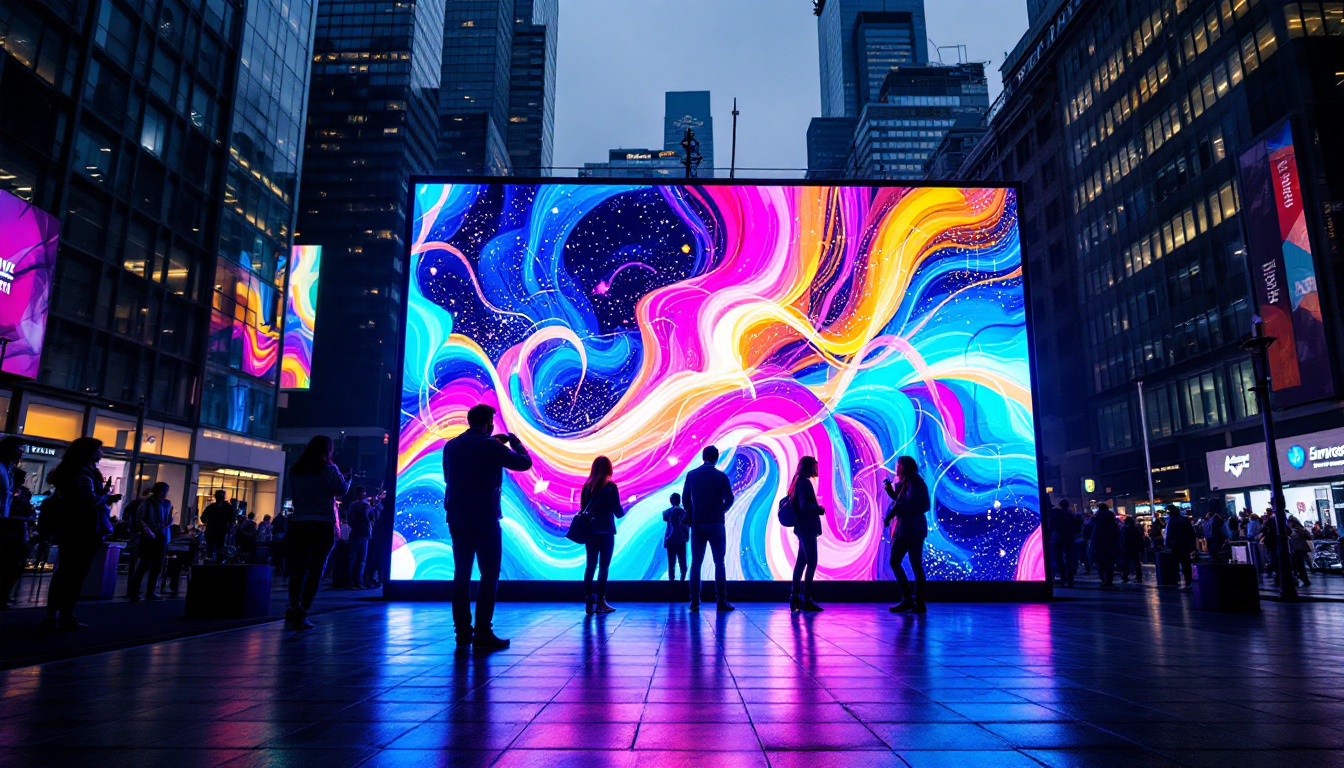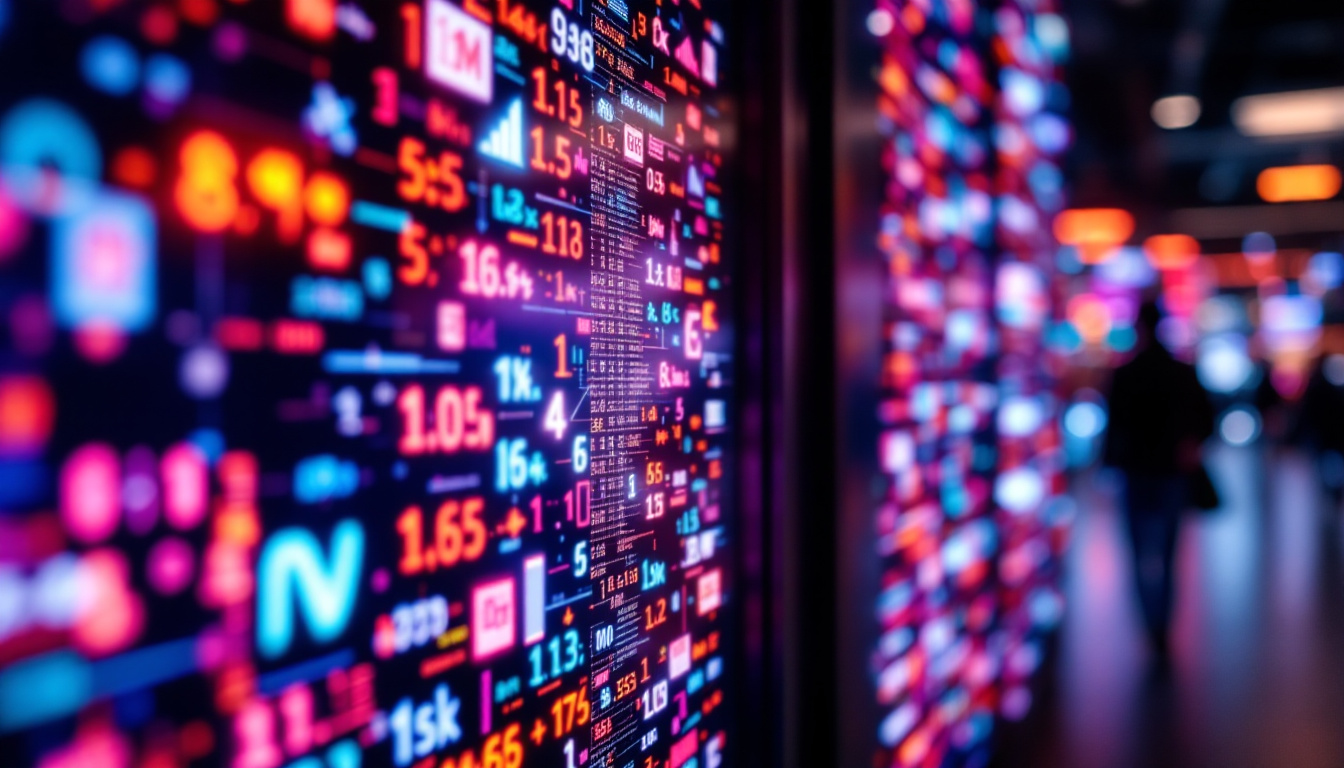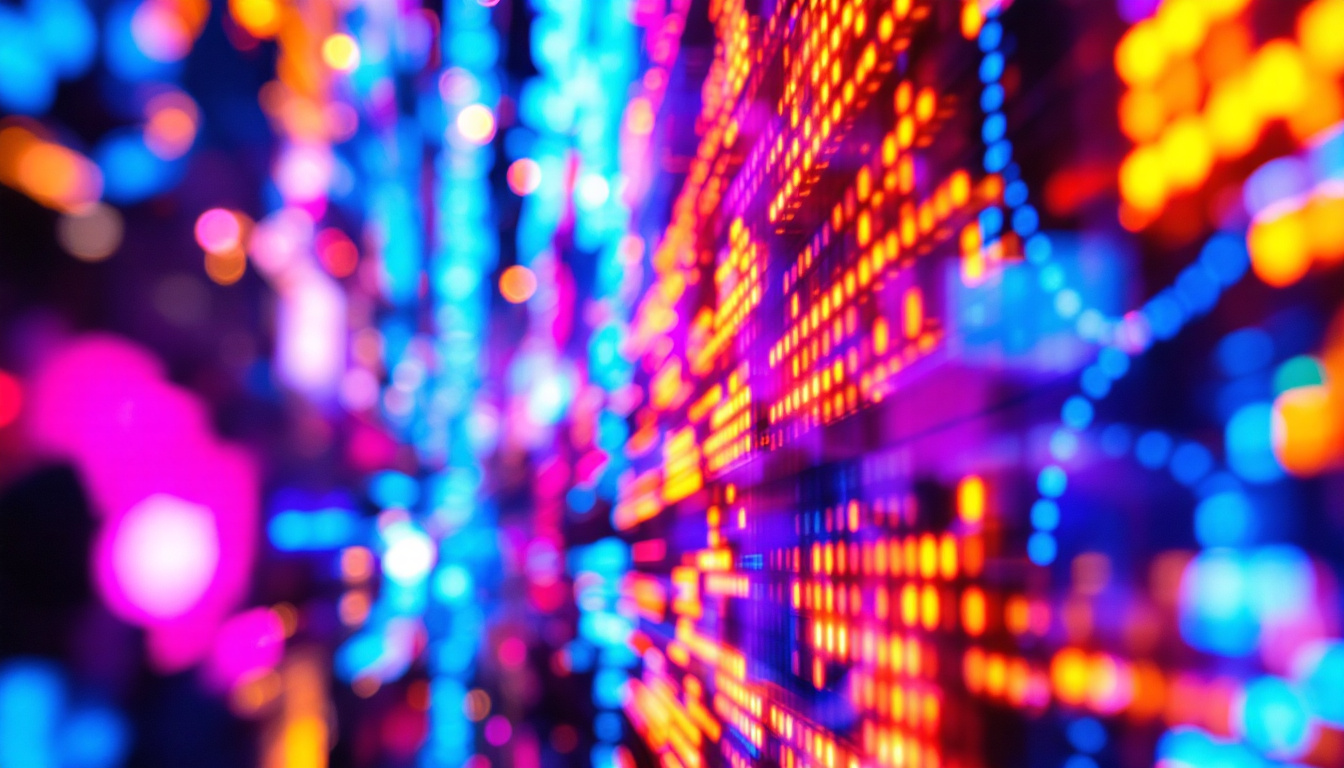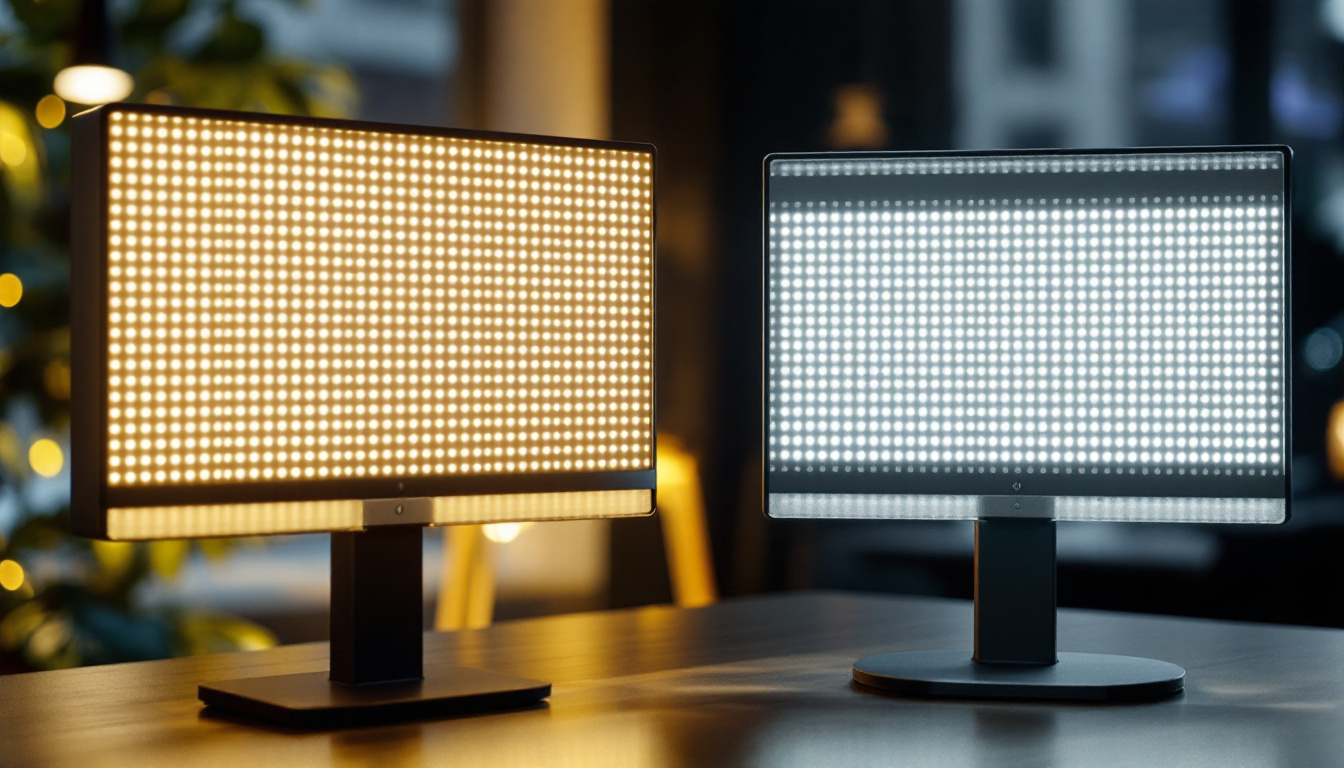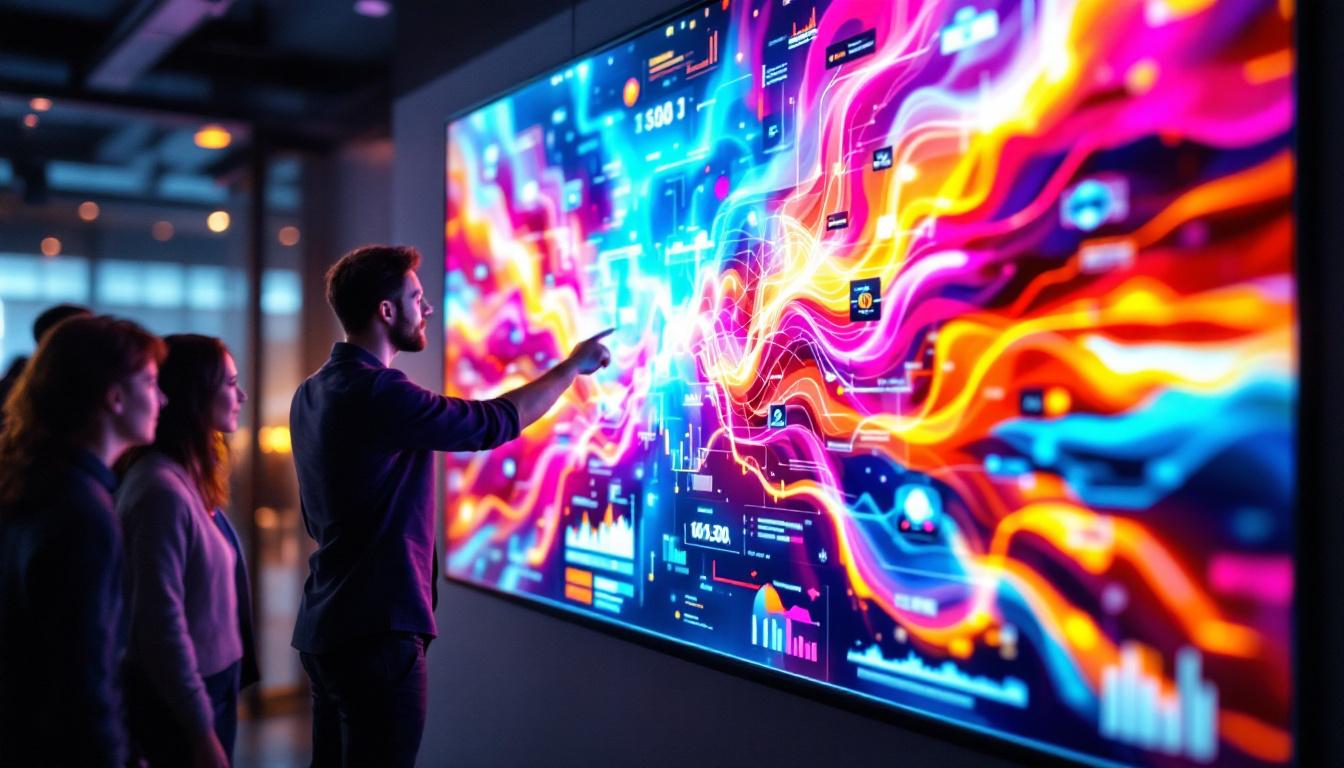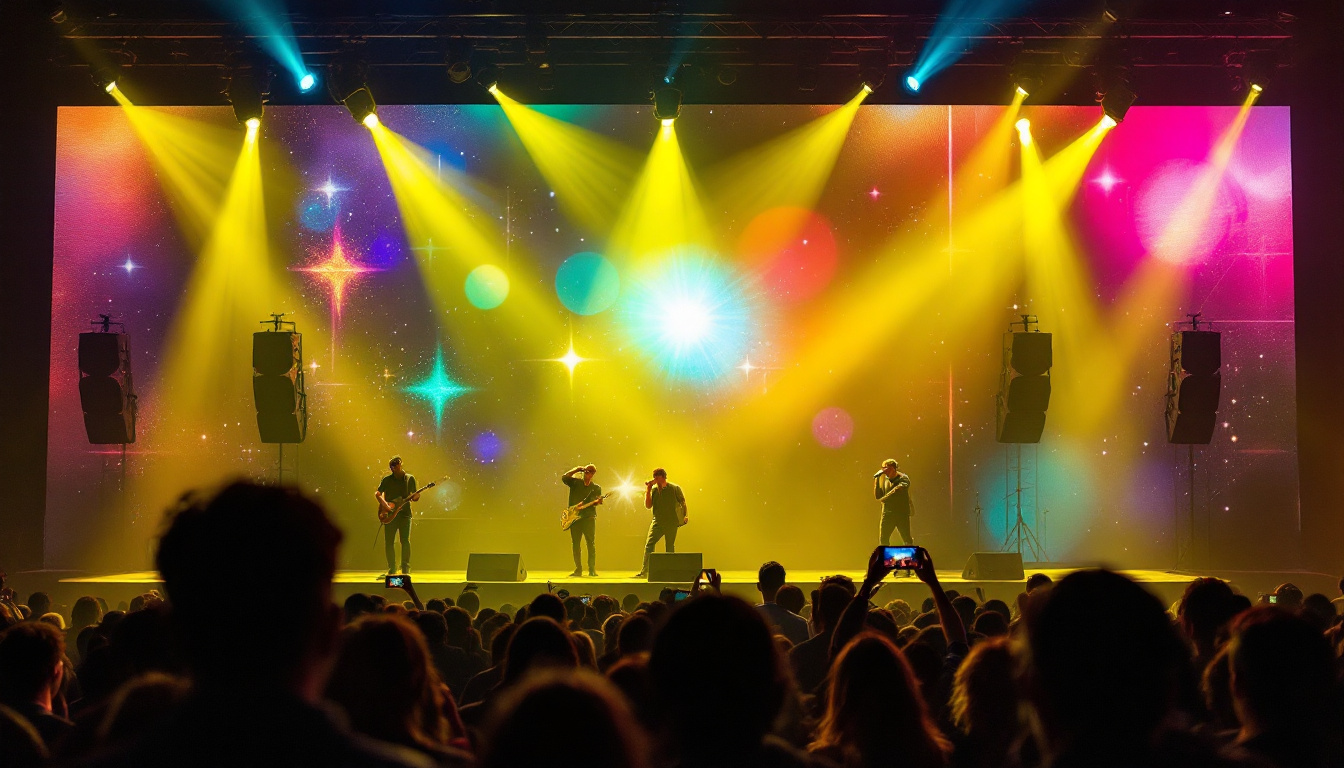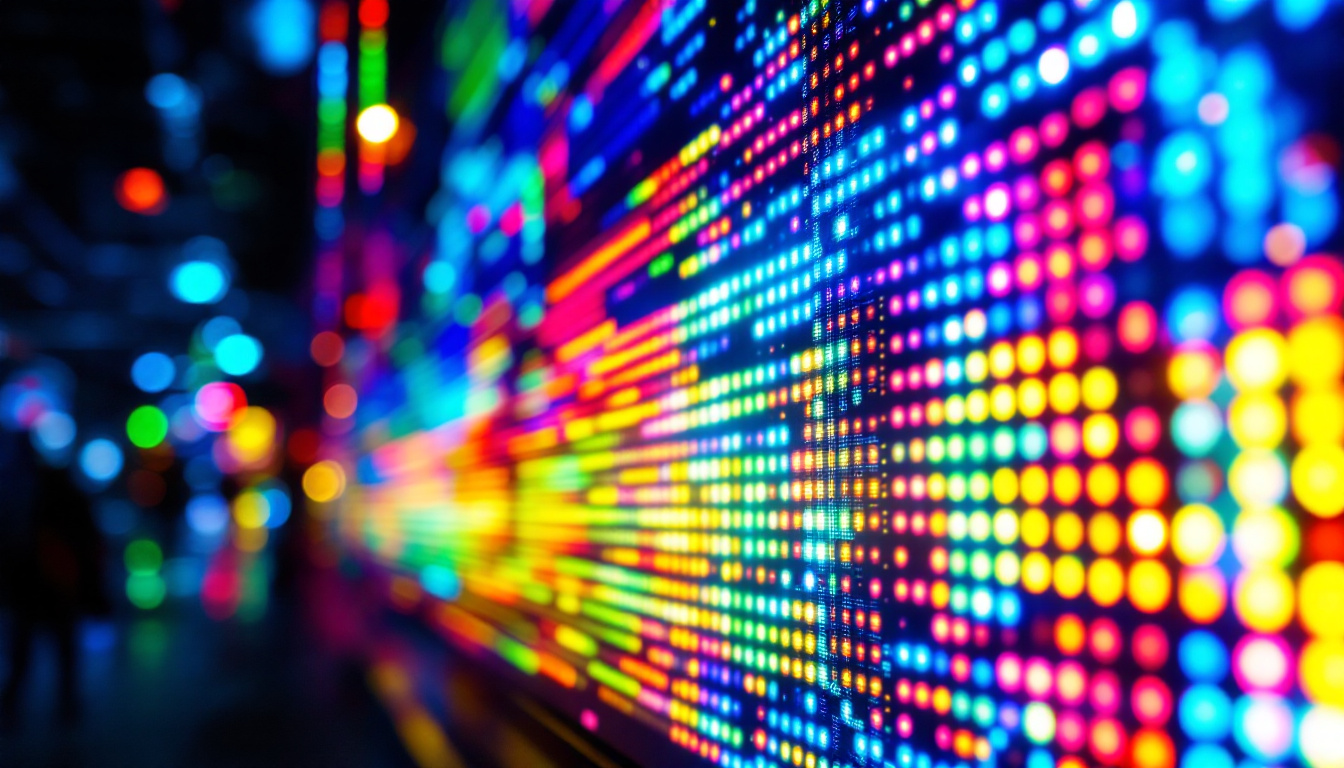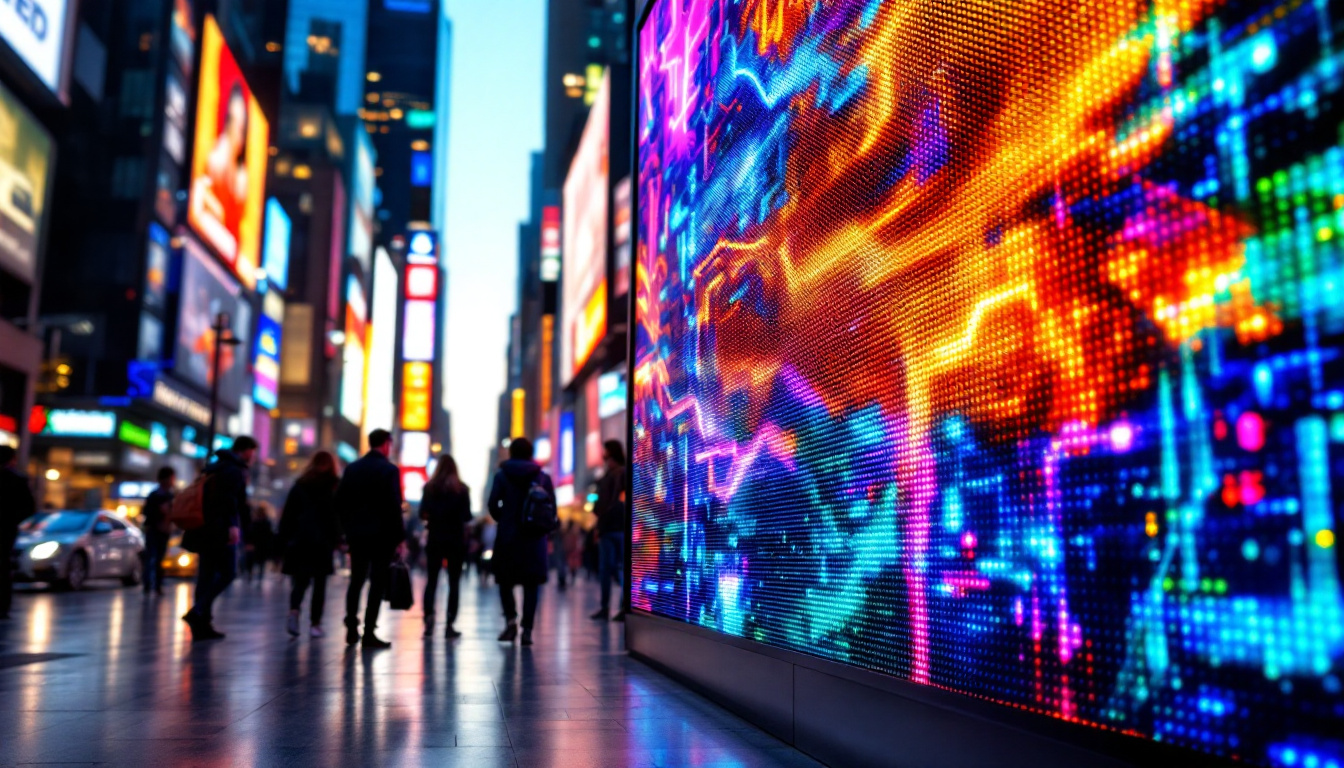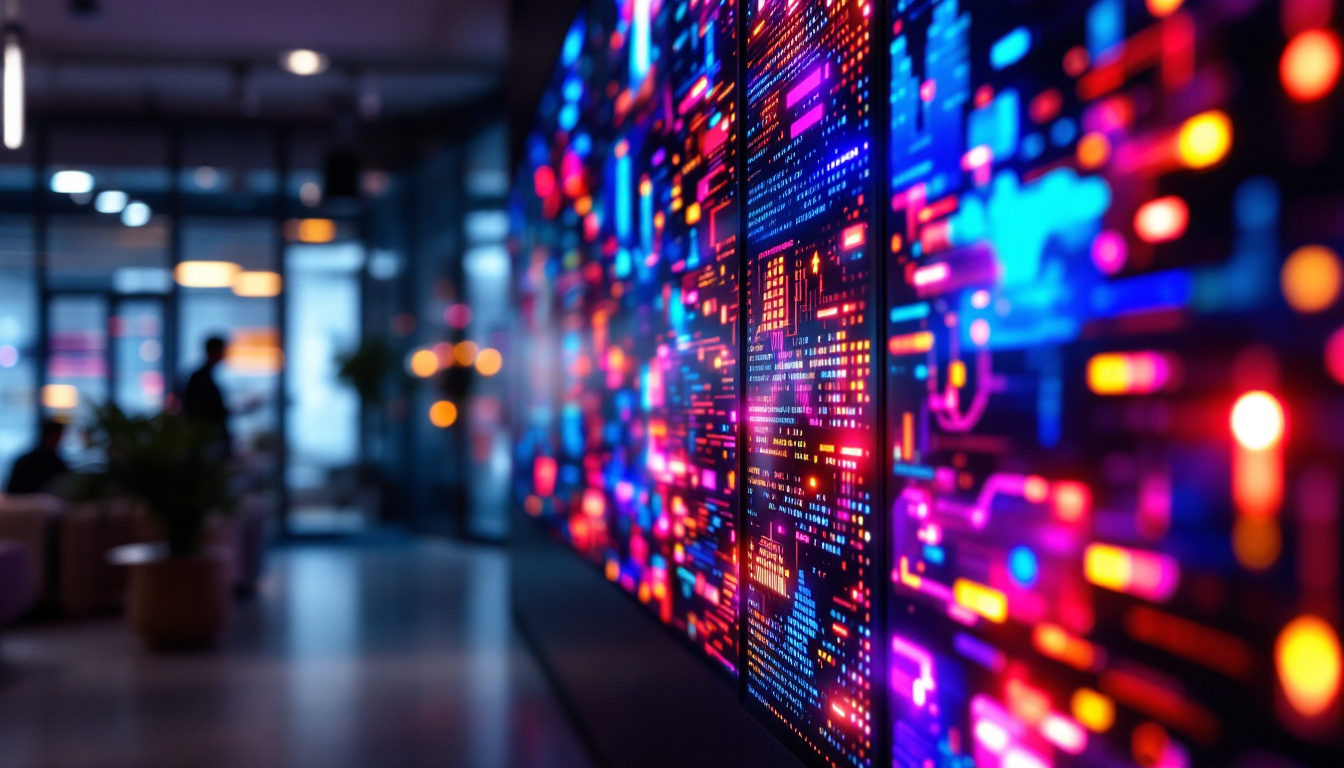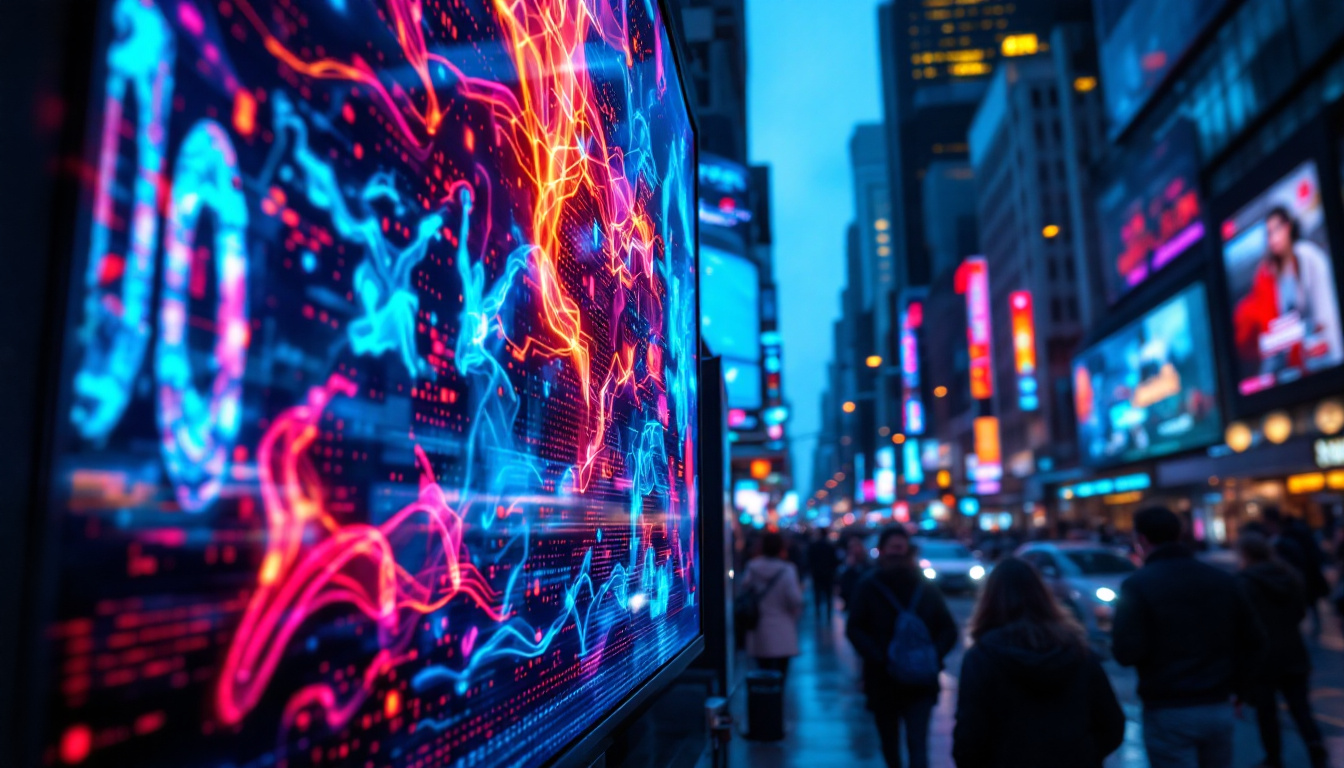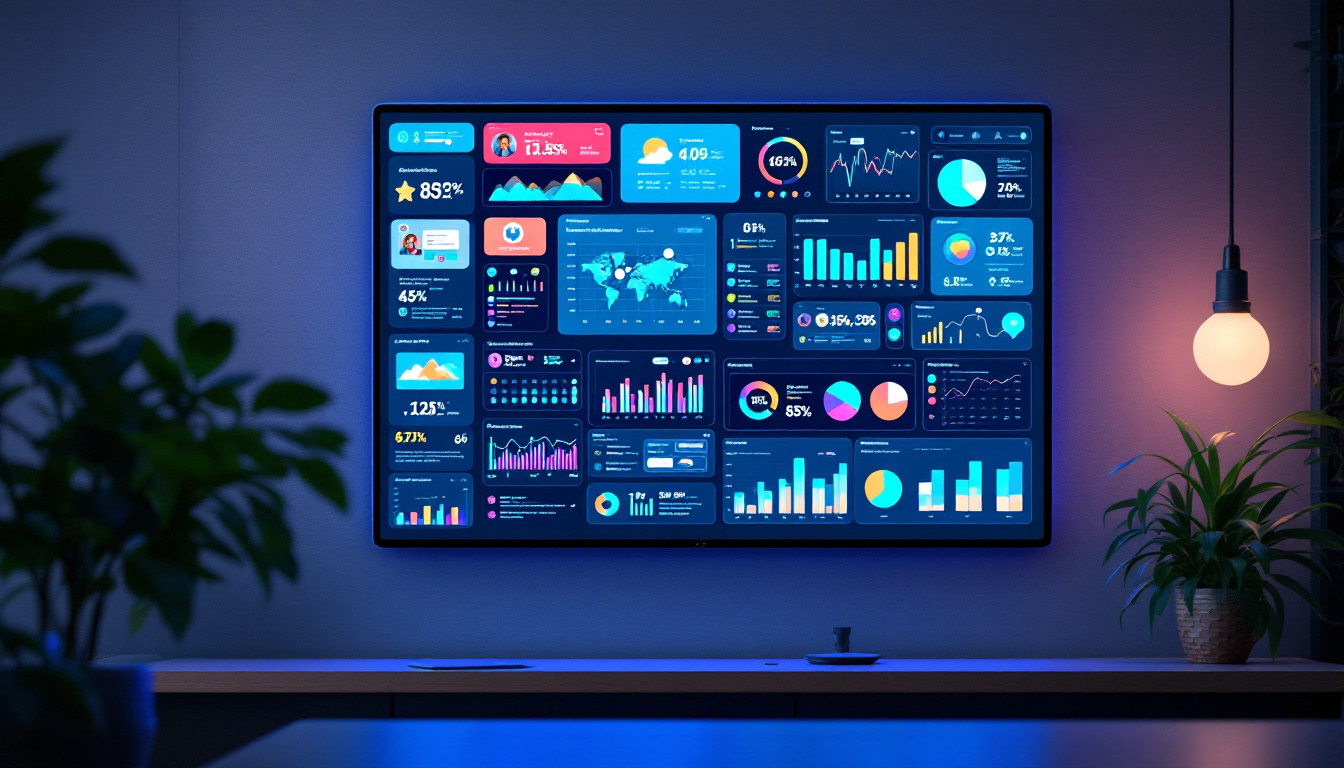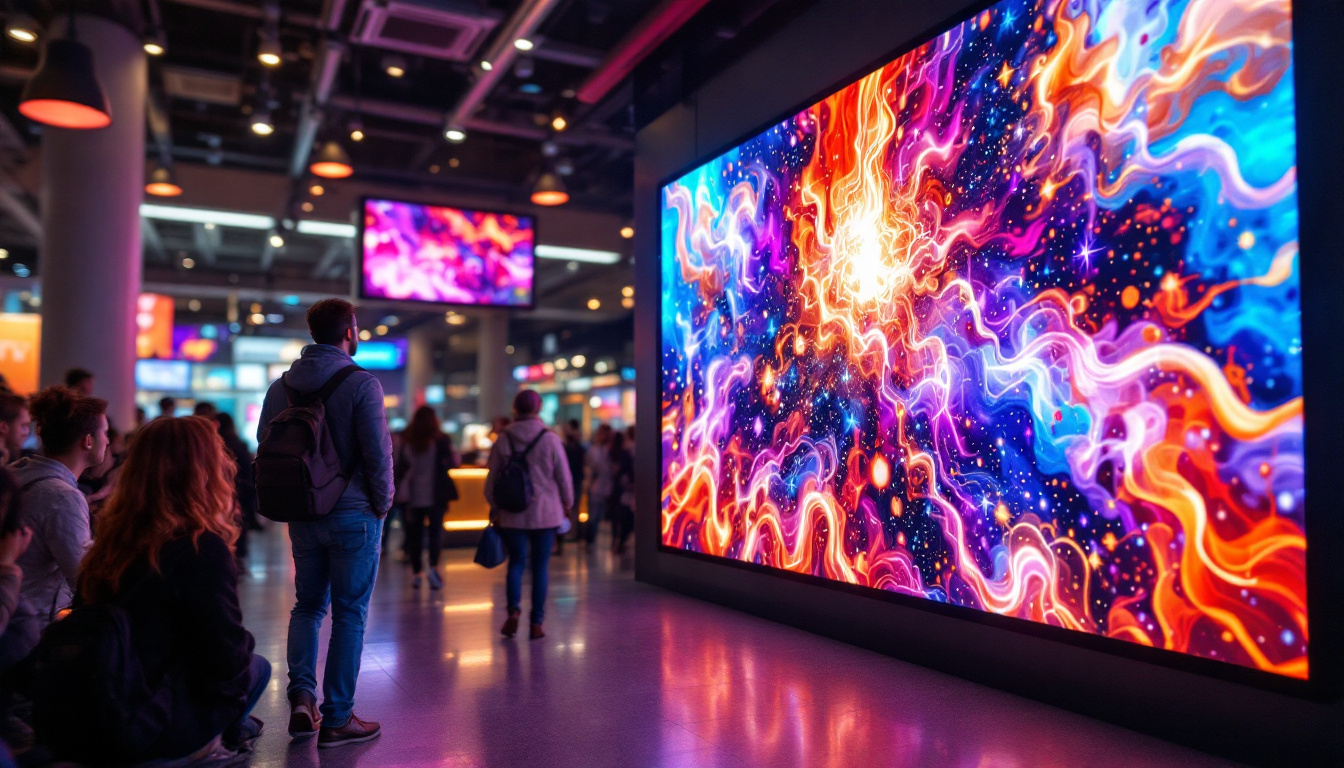In an age where visual communication is paramount, pixel logos and LED displays have emerged as powerful tools for branding and advertising. These technologies not only enhance visibility but also offer dynamic ways to engage audiences. This article delves into the intricacies of pixel logos and LED displays, exploring their significance, functionality, and applications.
Understanding Pixel Logos
Pixel logos are digital representations that utilize a grid of small squares or dots—known as pixels—to create an image or symbol. This design approach is particularly effective in digital formats, where clarity and detail can be enhanced through careful pixel arrangement.
The Aesthetic Appeal of Pixel Logos
Pixel logos have a unique charm that resonates with both nostalgia and modernity. The retro video game aesthetic appeals to a wide audience, evoking feelings of familiarity while simultaneously offering a fresh perspective. This duality makes pixel logos an attractive choice for brands aiming to convey creativity and innovation.
Moreover, the simplicity of pixel logos allows for easy recognition. The minimalist design ensures that even at smaller sizes, the logo remains identifiable, which is crucial in a world where consumers are bombarded with visual stimuli. This characteristic is particularly beneficial for brands looking to establish a strong presence on social media platforms, where profile pictures and logos are often displayed in reduced dimensions.
In addition to their visual appeal, pixel logos can also evoke a sense of community and connection. Many brands have embraced this style to align themselves with the growing retro gaming culture, tapping into a market that values authenticity and shared experiences. By incorporating pixel art into their branding, companies can foster a sense of belonging among their audience, creating a deeper emotional bond.
Technical Aspects of Pixel Logos
Creating a pixel logo involves meticulous attention to detail. Designers must consider the arrangement of each pixel to ensure that the final product effectively communicates the brand’s message. The choice of colors, shapes, and patterns plays a critical role in achieving the desired aesthetic.
Furthermore, pixel logos are often created using vector graphics software, which allows for scalability without loss of quality. This is particularly important for brands that require their logos to appear across various mediums, from business cards to large-scale banners. The versatility of pixel logos means they can be adapted for use in both digital and print formats, ensuring consistency in branding across all platforms.
Additionally, the creation of pixel logos often involves a collaborative process where designers may seek feedback from various stakeholders, including marketing teams and target audiences. This iterative approach not only enhances the final design but also ensures that the logo aligns with the overall brand strategy. By engaging in this collaborative effort, brands can create pixel logos that are not only visually striking but also resonate with their intended audience, reinforcing their brand identity in a memorable way.
LED Displays: A Modern Advertising Solution
LED (Light Emitting Diode) displays have revolutionized the way businesses communicate with their audiences. These displays utilize a matrix of LEDs to produce vibrant images and animations, making them ideal for advertising and informational purposes. The flexibility of LED technology allows for creative and eye-catching designs that can capture the attention of passersby, making them a favorite choice for retail spaces, stadiums, and public events.
How LED Displays Work
At the core of LED technology is the semiconductor material that emits light when an electric current passes through it. Each LED can be individually controlled, allowing for a wide range of colors and brightness levels. This capability enables LED displays to showcase everything from static images to dynamic videos. The technology behind these displays also includes advanced pixel mapping, which ensures that images are rendered with high clarity and detail, even at close viewing distances.
The arrangement of LEDs in a grid format allows for the creation of pixelated images, similar to pixel logos. This similarity means that pixel logos can be effectively displayed on LED screens, ensuring brand consistency across digital platforms. Furthermore, the modular design of many LED displays allows for easy scaling, enabling businesses to create custom sizes that fit their specific advertising needs, whether it’s a small storefront or a massive billboard.
Advantages of LED Displays
One of the primary advantages of LED displays is their energy efficiency. Compared to traditional lighting solutions, LEDs consume significantly less power, making them a more sustainable option for businesses. This not only reduces operational costs but also aligns with the growing demand for eco-friendly practices. Moreover, the longevity of LED technology means that businesses can expect a longer lifespan from their displays, further enhancing their cost-effectiveness over time.
Additionally, LED displays are known for their brightness and visibility, even in direct sunlight. This feature makes them ideal for outdoor advertising, where capturing attention is crucial. The ability to update content in real-time further enhances their effectiveness, allowing businesses to adapt their messaging based on current trends or events. For instance, during a major sporting event, a retail store can quickly switch its promotions to reflect the excitement of the occasion, ensuring that their advertising remains relevant and engaging. This adaptability not only maximizes visibility but also fosters a dynamic interaction with the audience, making LED displays a powerful tool in modern marketing strategies.
Applications of Pixel Logos and LED Displays
The combination of pixel logos and LED displays has found applications across various industries. From retail to entertainment, these technologies are transforming how brands engage with their audiences.
Retail and Branding
In the retail sector, pixel logos displayed on LED screens can create an immersive shopping experience. Dynamic advertisements that feature pixel logos can draw customers’ attention and enhance brand recognition. This approach not only promotes products but also reinforces the brand’s identity in a visually appealing manner.
Moreover, the versatility of LED displays allows retailers to showcase multiple products or promotions simultaneously, maximizing the impact of their advertising efforts. This adaptability is particularly beneficial during peak shopping seasons or special events. Retailers can easily update their displays to reflect current trends, seasonal sales, or new arrivals, ensuring that their messaging remains fresh and relevant to consumers. The ability to change content on-the-fly also allows for targeted marketing strategies, where specific messages can be tailored to different demographics based on time of day or customer traffic patterns.
Entertainment and Events
In the entertainment industry, LED displays have become a staple at concerts, festivals, and sporting events. The vibrant colors and dynamic visuals created by LED technology enhance the overall experience for attendees. Pixel logos can be integrated into stage designs, creating a cohesive brand presence throughout the event.
Additionally, LED displays can be used for live streaming and broadcasting, allowing brands to reach a wider audience. The ability to display real-time updates or interactive content further engages viewers, making events more memorable. For instance, during a live concert, fans can see not only the performers but also engaging graphics that sync with the music, enhancing the sensory experience. Furthermore, the use of pixel logos in promotional videos or highlight reels can strengthen brand recall, as attendees associate the visuals with the excitement of the event. As technology continues to evolve, we can expect even more innovative uses for LED displays, such as augmented reality experiences that blend the physical and digital worlds, captivating audiences in unprecedented ways.
Future Trends in Pixel Logos and LED Displays
As technology continues to evolve, the future of pixel logos and LED displays looks promising. Innovations in display technology and graphic design are set to enhance the capabilities of these tools even further.
Advancements in Display Technology
Future LED displays are expected to become even more energy-efficient and versatile. Developments in micro-LED technology, for instance, promise to deliver higher resolution images with lower power consumption. This could lead to more compact displays that maintain high-quality visuals.
Additionally, the integration of artificial intelligence (AI) into display systems may allow for more personalized advertising experiences. Brands could leverage data analytics to tailor content based on audience preferences, creating a more engaging interaction.
Evolution of Design Trends
As design trends evolve, pixel logos are likely to adapt to new aesthetics while retaining their core principles. The rise of 3D graphics and augmented reality (AR) could influence how pixel logos are designed and displayed, creating more immersive experiences for consumers.
Moreover, sustainability will continue to play a significant role in design choices. Brands may opt for eco-friendly materials and production methods, aligning their visual identity with their commitment to environmental responsibility.
Conclusion
Pixel logos and LED displays represent a fusion of creativity and technology that has transformed the landscape of branding and advertising. Their unique characteristics and capabilities make them invaluable tools for businesses looking to connect with their audiences in meaningful ways.
As advancements continue to shape these technologies, brands that embrace pixel logos and LED displays will likely find themselves at the forefront of innovative marketing strategies. By leveraging the power of visual communication, businesses can enhance their brand presence and engage consumers like never before.
In summary, the synergy between pixel logos and LED displays not only enhances brand visibility but also creates opportunities for dynamic engagement. As these technologies evolve, their potential to captivate audiences will only grow, making them essential components of any modern marketing strategy.
Discover LumenMatrix’s Innovative LED Solutions
Ready to elevate your brand’s visual impact and captivate your audience with cutting-edge LED displays? Explore LumenMatrix’s comprehensive range of LED display modules, from vibrant Indoor and Outdoor LED Wall Displays to dynamic Vehicle and Sports LED Displays, and beyond. Each solution is crafted to deliver unparalleled clarity and engagement, ensuring your message resonates with power and precision. Check out LumenMatrix LED Display Solutions today and join the forefront of digital signage innovation.



